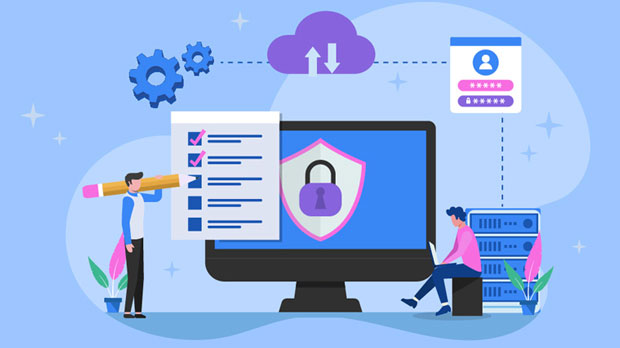When it comes to maintaining privacy online, sock s5 proxies have become an essential tool for many internet users. Among the various options available in the market, two notable proxies are PYPROXY and Kickass Proxy. These two services offer different features, performance levels, and privacy protection mechanisms. In this article, we will dive deep into comparing the privacy protection capabilities of PyProxy and Kickass Proxy, focusing on key aspects such as anonymity, security, speed, and usability. By the end, readers will have a better understanding of which proxy service can provide superior privacy protection based on individual needs. Understanding socks5 proxy: The Basics of Privacy ProtectionSOCKS5 proxy is a widely used protocol that routes internet traffic through an intermediary server, acting as a gateway between users and the websites they visit. Unlike traditional HTTP proxies, SOCKS5 does not modify the data traffic, allowing for greater flexibility and compatibility with various internet protocols such as FTP, email, and P2P connections.One of the most significant advantages of SOCKS5 proxies is their ability to conceal users' IP addresses, providing a layer of anonymity. This, combined with encryption, helps prevent online tracking and enhances overall privacy. However, not all SOCKS5 proxies are created equal. Some providers offer stronger privacy protections and security features than others, which is where PyProxy and Kickass Proxy come into play.Privacy and Anonymity: A Critical FactorWhen selecting a SOCKS5 proxy for privacy protection, one of the key considerations is how well it hides users' identities and browsing activity. In this comparison, both PyProxy and Kickass Proxy claim to provide excellent anonymity features, but their effectiveness can vary.PyProxy takes privacy seriously by implementing strict no-logs policies. This means the service does not keep track of user activities, IP addresses, or browsing history. As a result, even if the provider is subpoenaed or faced with legal action, there is no data to hand over to authorities. Furthermore, PyProxy routes all traffic through high-quality encryption, making it nearly impossible for third parties, such as hackers or ISPs, to monitor or intercept your data.Kickass Proxy, on the other hand, offers a solid level of anonymity but does not emphasize the same degree of privacy protection as PyProxy. While Kickass Proxy also claims to have a no-logs policy, its servers are located in jurisdictions with potentially weaker privacy laws, which could be a concern for users who prioritize absolute privacy. Additionally, Kickass Proxy does not provide as robust encryption protocols as PyProxy, leaving some vulnerability to surveillance and tracking.Overall, PyProxy emerges as the stronger choice for users seeking complete privacy and anonymity. Its advanced security protocols and strict no-logs policy make it a top contender for safeguarding user identity.Security Features: How Well Do They Protect Against Online Threats?While both PyProxy and Kickass Proxy focus on privacy, security is another crucial factor that differentiates these two services. A good SOCKS5 proxy should not only mask the user’s IP address but also provide strong protection against potential online threats such as hackers, malware, and phishing attacks.PyProxy employs high-end encryption to ensure the integrity of data and communications. It uses encryption protocols like AES-256, which is considered one of the most secure encryption methods currently available. This prevents third parties from gaining access to sensitive information. Additionally, PyProxy integrates advanced security features such as DNS leak protection and an automatic kill switch. These features help protect users' real identities by ensuring that no data is leaked, even in the event of a connection failure.Kickass Proxy, while still offering solid security, falls slightly behind PyProxy in this area. It uses decent encryption methods, but the lack of additional security features such as DNS leak protection or an automatic kill switch puts users at a higher risk of data leakage. For example, if the VPN connection is interrupted unexpectedly, users’ real IP addresses may be exposed. This is particularly concerning for those who want to protect sensitive data or maintain complete anonymity.In terms of security, PyProxy once again outshines Kickass Proxy due to its superior encryption standards and extra protection mechanisms.Speed and Performance: How Well Do They Handle Traffic?Another important aspect of any proxy service is how well it performs, especially in terms of speed. SOCKS5 proxies are generally faster than traditional VPNs because they only route traffic without the additional overhead of encrypting everything. However, the performance of a SOCKS5 proxy can vary depending on factors such as server quality, network congestion, and distance from the server.PyProxy offers consistent performance with relatively fast speeds across its network of servers. Since PyProxy focuses on providing a high-quality experience for users, its servers are optimized to ensure that there is minimal lag or latency during browsing or streaming activities. Users generally report good speed even when accessing websites and services in different countries.Kickass Proxy, on the other hand, while providing decent speed, can experience slower performance under heavy usage. As Kickass Proxy is not as widely known for optimizing its infrastructure, it sometimes struggles to maintain high-speed connections, particularly when accessing servers that are farther away. However, for light browsing and less data-intensive activities, Kickass Proxy is still a viable option.When it comes to speed and performance, PyProxy takes the lead due to its commitment to providing a seamless user experience with minimal latency and faster data transfer speeds.Usability and Compatibility: Which Proxy Is Easier to Use?In terms of usability, both PyProxy and Kickass Proxy aim to provide user-friendly services. However, there are key differences in terms of setup, interface, and support.PyProxy offers a clean and straightforward interface that allows users to easily configure their proxy settings across a wide range of platforms and applications. Whether using PyProxy for general web browsing, torrenting, or other P2P activities, the setup process is simple, and there is plenty of documentation to guide users. Additionally, PyProxy’s customer support team is known for being responsive and helpful, ensuring that users can quickly resolve any issues they encounter.Kickass Proxy, while relatively easy to use, lacks the same level of polish and user-centric design that PyProxy offers. The configuration process can be more complex for users who are not familiar with proxy settings, and there are fewer resources available to guide new users. Moreover, customer support from Kickass Proxy is reported to be slower, and troubleshooting may take longer than with PyProxy.PyProxy excels in terms of usability due to its easy setup and superior customer support, making it more accessible for users of all experience levels.Conclusion: Which SOCKS5 Proxy Is Better for Privacy Protection?In conclusion, when it comes to SOCKS5 proxy services, PyProxy stands out as the better option for those looking for enhanced privacy protection, security, speed, and usability. Its strong encryption protocols, strict no-logs policy, advanced security features, and solid performance make it a top contender in the privacy protection space. While Kickass Proxy is a decent choice for general use, it does not match the level of privacy and security that PyProxy offers. Users who prioritize anonymity and data protection should consider PyProxy as the more reliable and secure option.
Oct 30, 2025



































































